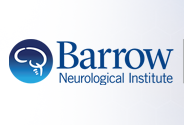Amyloid β interferes with wound healing of brain microvascular endothelial cells by disorganizing the actin cytoskeleton.
Document Type
Article
Abstract
Cerebral amyloid angiopathy (CAA) is a disease in which amyloid β (Aβ) is deposited in the cerebral blood vessels, reducing compliance, tearing and weakening of vessel walls, leading to cerebral hemorrhage. The mechanisms by which Aβ leads to focal wall fragmentation and intimal damage are not well understood. We analyzed the motility of human brain microvascular endothelial cells (hBMECs) in real-time using a wound-healing assay. We observed the suppression of cell migration by visualizing Aβ aggregation using quantum dot (QD) nanoprobes. In addition, using QD nanoprobes and a SiR-actin probe, we simultaneously observed Aβ aggregation and F-actin organization in real-time for the first time. Aβ began to aggregate at the edge of endothelial cells, reducing cell motility. In addition, Aβ aggregation disorganized the actin cytoskeleton and induced abnormal actin aggregation. Aβ aggregated actively in the anterior group, where cell motility was active. Our findings may be a first step toward explaining the mechanism by which Aβ causes vascular wall fragility, bleeding, and rebleeding in CAA.
Keywords
Humans, Endothelial Cells, Amyloid beta-Peptides, Actins, Brain, Actin Cytoskeleton
Medical Subject Headings
Humans; Endothelial Cells; Amyloid beta-Peptides; Actins; Brain; Actin Cytoskeleton
Publication Date
3-1-2024
Publication Title
Experimental cell research
ISSN
1090-2422
Volume
436
Issue
1
First Page
113958
Last Page
113958
PubMed ID
38325585
Digital Object Identifier (DOI)
10.1016/j.yexcr.2024.113958
Recommended Citation
Maeda, Takuma; Shimamori, Keiya; Kurita, Hiroki; Tokuraku, Kiyotaka; and Kuragano, Masahiro, "Amyloid β interferes with wound healing of brain microvascular endothelial cells by disorganizing the actin cytoskeleton." (2024). Translational Neuroscience. 2418.
https://scholar.barrowneuro.org/neurobiology/2418


